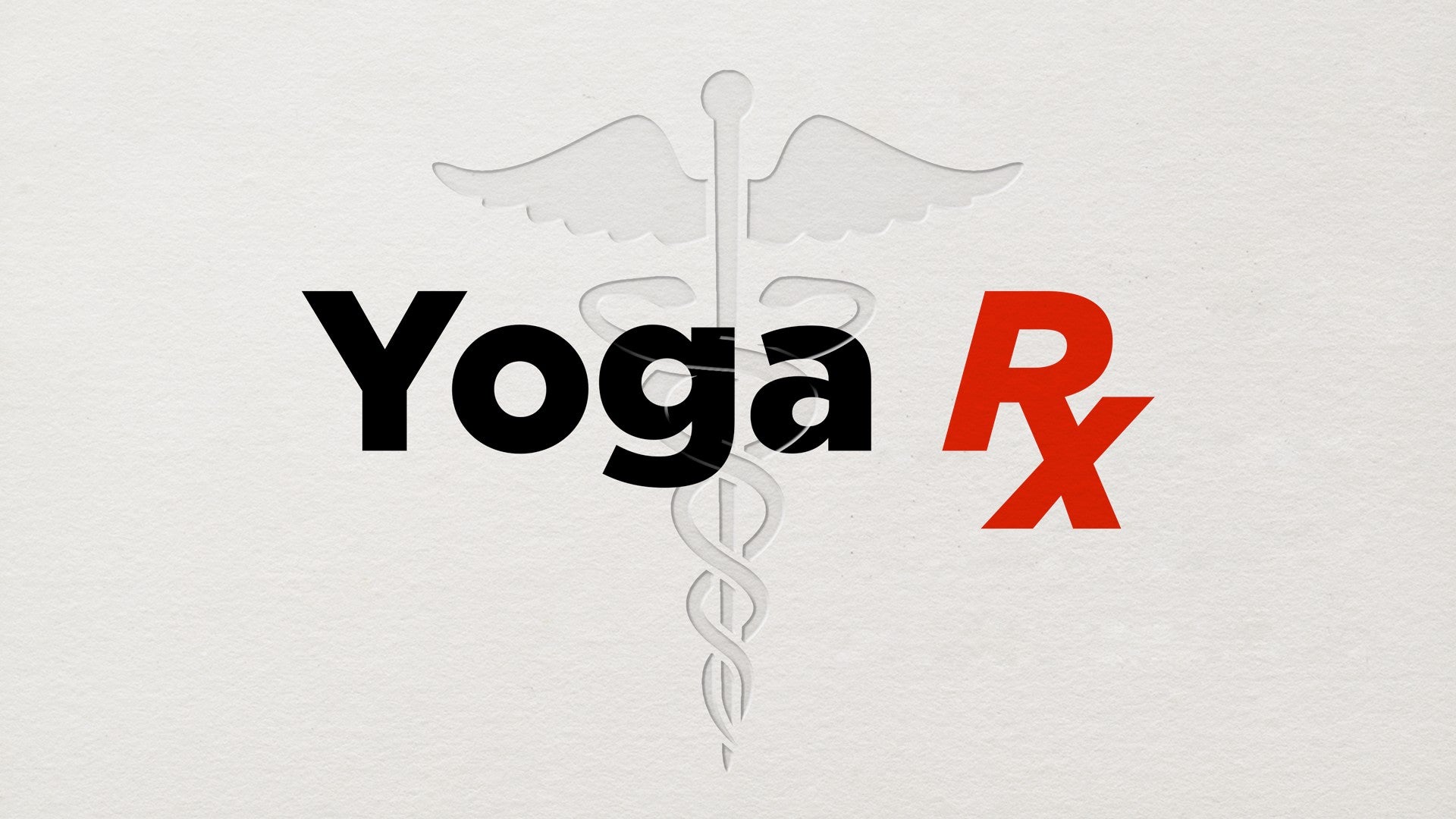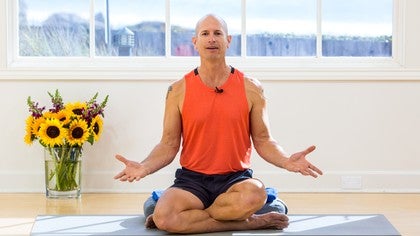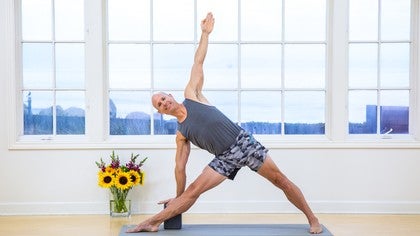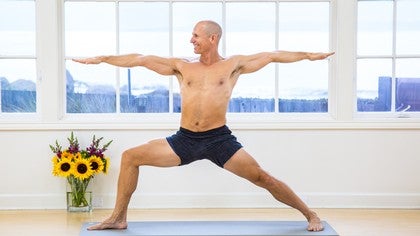Description
About This Video
Transcript
Read Full Transcript
Welcome. I'd like to take some time to talk about how we're going to be using the yoga practice to work with pain and deepen our practice at the same time. The first thing we'll need to do is decide where we are on the spectrum. Is this a recent injury? Is it in an acute phase, in other words? Or is it something that's been around for a while, something that we call persistent? These are important things to discern before we start making decisions as to what to do in yoga. If we're in an acute phase, what we may need to do is rest for a little while. Let the body have its time to do healing. We can't really speed that up. What we need to be able to do is provide the best environment possible for it. So it may even be important to talk to a professional who can guide you into terms of how long should this expected to take to heal. That's important information. Very good to know how long you might have in front of you. But I can tell you this, it's always good to help with a little bit of movement, of course, if you're clear to do so. Movement is medicine. The second possibility is that we're in a persistent phase. That's where pain has persisted longer than an expected healing time. And as I mentioned in the other talk, as we were trying to explain the updated understanding of pain, the longer we're in pain, especially a year, two years, 10 years, the less and less and less directly related to tissue damage it is. That what we're seeing more and more is that the nervous system itself has become proficient at producing pain. It's very easy to provoke it into its protective mode known as pain. So as we begin to work with our body in yoga, through yoga, we need to work with our mindset. How are we going into this? One mindset could be, and I hear this a lot as a pain management person, as somebody who teaches yoga, could you give me a pose or a stretch that'll just make this go away? And they want the key, the silver bullet that will just make the pain go away. And it's very difficult to give something to that person because we never quite know how the body's going to respond. Notice the keyword is respond. Something we'll talk about in a minute. So with trying to develop the proper exercise, the mentality is often, keyword is to fix, give me something and fix this. But if you look at this from a broader perspective, to give one exercise and make pain go away, there's no depth of understanding as to what I was doing in my life that may have brought about that pain. There's no depth to that kind of a mode of thinking, the fixed thinking. What we're looking for is long-term results, something that we can rely on, a mindset that we can go back to over and over again and apply in any situation. Pain is a part of life. It's not something that we can just always push to the side. So if we have the tools to work with it, and that's what we're doing in these yoga sessions here together, we can become empowered. That's the opposite side of the coin. Fix is one side, empowered and deep understanding of pain is the other side. And it's the one I want to take you down through these sessions. So the first thing to understand as we're going into the poses is I'm using this to discover. That is our active verb. We're learning how to discover our body. And what I like to call it is the movement fence. So for example, if we're doing some movements with the arm and shoulders, that's part of what we're working on in this series. I'm learning first, where is my movement fence? So I moved there. Oh, that hurts right there. All right. That's part of the fence. How about over there? Oh, there it is over there. It kind of bothers. How high can I move? Oh, right there. So we're sort of describing this fence of movement, but don't let that word fence fool you. The fence is movable. How do we move it? And why is the fence there? Remember that pain is protection. It's not an error that your body is making. Your body is responding to signals or rather I should say your nervous system and brain are responding to signals that the nerves are sending it. And so if it has become proficient at producing pain, what we're trying to do is discover where that fence is and seeing if we can change the brain's perspective. Then we figure out how to calm it down or the nerves down so that it rearranges its perspective on that movement. We practice the poses. We do things like turning the arm and make an experience. So we're discovering that fence and then saying, well brain nervous system, try this. How does it feel? Actually, it doesn't hurt at all. Perfect. You may have just pushed the fence out a little bit. What if we tried it out here against a wall and practice something like this? I can do that too. So we begin slowly in a safe perspective, in a safe environment. If we push too far too fast, we just trigger that protection mode right again. So take your time as you're doing these poses and exploring. As we continue to practice, one thing that will begin to emerge is strength. Think about how the brain nervous system might respond to the muscles actually developing more capacity to control a joint. Safety. Brain says, hey, you know what? There's more muscular control around that joint. I think I could lower my output of protection, which is seen as limitation and range of motion, which is seen as pain. The body begins to allow more and more motion.
The next is, as we describe and you'll see the way that I try to cue the poses, we call them yogic actions. There are some very specific things that I've found in no other practice other than yoga, where we begin to learn joint actions, muscular contractions that help the body really experience full ranges of motion. Now it certainly could be that your body won't allow full range of motion just yet at this time. But as you begin to learn and practice and review and review, you know, I've heard my teachers say maybe a hundred times a certain motion and it took the hundredth time to finally go, oh, I hear what you're saying now. You mean move this way. It sometimes takes the body and or the listening mind to a number of repetitions to catch on. We take these yoga actions. We explore. There's that key word again. And remember what we're trying to do is interact. So we do a motion not to fix but to experience the response. The body says, yes, I can or no, I can't. No, I can't is not a failure of the pose. It's actually a learning experience. No, I can't says, okay, the fence is here today. What if I tried some other motions? What if I tried a few poses down the line in the sequence and begin to work with those? My body can tolerate there. The fence expands. So you're learning to interact with your body via its sensational response to you in the poses and all of this comes together. And as you practice this, it's it goes much more beyond pain and it really begins to open up more and more and more of what yoga really is this ability of to feel and to respond to yourself. And we grow and grow. Let's talk about the possibility and let's just be honest and say, what if the pain doesn't change? Did yoga fail us? No, it may well be that your body does not feel safe enough to allow that range of motion. Plain and simple. It may be that your body either isn't ready or there's something that needs to be taken a deeper look at again with a professional who can help you understand what's going on in a joint or limb or wherever it is. But please don't see that as a failure. It's a discovery. It says I've tried my darn best to do this and my body still says no. So we go get help where we need it. We come back maybe another time. We practice with leg movements or arm movements or just stay away from the part for a while. But please don't think that because something doesn't change that the practice isn't working. This is the discovery is the practice. And as I mentioned, working in this way of feeling and responding and the humility and the patience that we'll learn in these practices together, it begins to open up yoga to blossom its deeper and deeper and deeper messages. And I really look forward to and I'm loving being here with you and helping guide you on these programs and practices. And I look forward to seeing you many, many more times. Namaste.
Yoga Rx: Nathan Briner
Comments
You need to be a subscriber to post a comment.
Please Log In or Create an Account to start your free trial.















